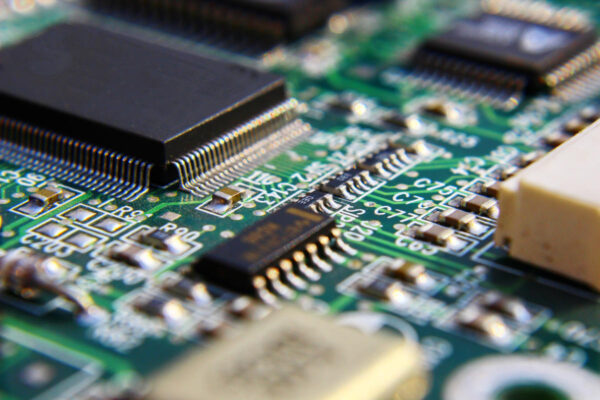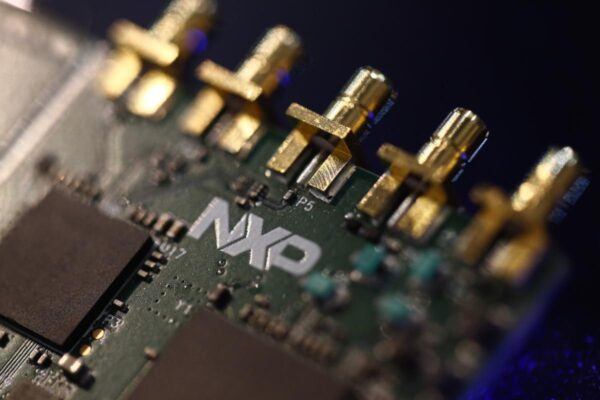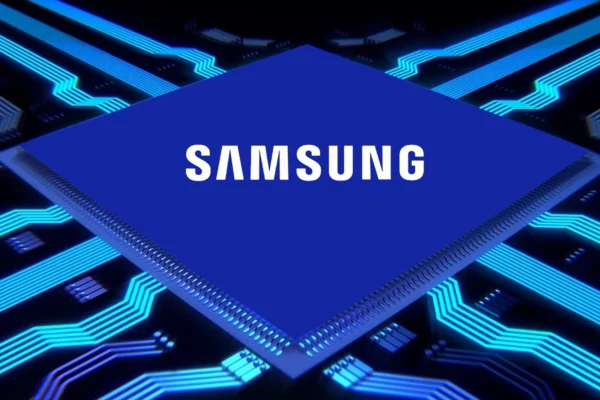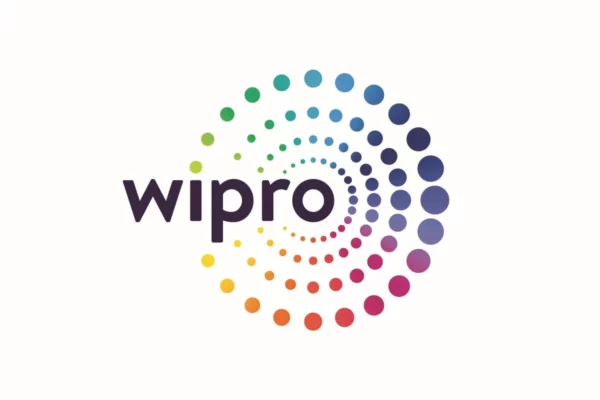Top 10 Semiconductor Manufacturing Companies in India in 2023

Top 10 Semiconductor Manufacturing Companies in India in 2023
The rising popularity of electronic devices has led to a surge in demand for semiconductors in India. As an alternative, this encourages the growth of semiconductor makers.
It is simple to see that the “make-in-India” movement has led to a prominent growth in the manufacture of electrical and electric products if we look back over the past ten years. India is leading the development of everything from mobile phones to mobile accessories, from TVs to computers to electric scooters, and they all essentially need semiconductors.
To better serve this sector and the Indian population, many startups and established businesses have entered or are entering the semiconductor industry. The global semiconductor chip supply chain is currently being diversified, and even the Indian government is supporting new startups there. The globe and India both aim to move away from depending only on a few American, Japanese, South Korean, or Taiwanese semiconductor manufacturers.
What exactly is a semiconductor?

A semiconductor is a very small chip that powers electronic equipment. It controls the flow of energy in electronic devices like computers, game consoles, electric cars, smartphones, and medical equipment. Consumer goods like air conditioners, rice cookers, and CPUs and industrial equipment like railroads, ATMs, and other infrastructure all employ semiconductors.
These can also be used to power electric vehicles (EVs). Moreover, a single chip is insufficient to produce a standard EV; rather, hundreds are needed. The demand for semiconductors has skyrocketed due to expansions in artificial intelligence (AI), the internet of things (IoT), and other areas of technology. The global scarcity and supply chain restrictions have recently put the semiconductor sector under a lot of pressure, though.
Causes and effects of the semiconductor industry shortfall
The semiconductor market has been highly turbulent for the past two years due to supply chain issues and a global shortage. Experts expect it to last till the beginning of 2024. More than 169 sectors worldwide, including India, have been disrupted by supply chain disruptions in the semiconductor industry. According to Deloitte, the chip shortage during the past two years has caused a loss in revenue of more than $500 billion.
What causes the global scarcity of semiconductors?
The lack of semiconductors, according to S&P Global Engineering Solutions, is not new. It has a cycle. The duration of shortages has typically varied from six months to a year, although the present one has departed from that pattern. Following are a few reasons why:
- Unexpected occurrences prior to and during the outbreak
A fire in Ukraine at the start of 2019 had an effect on how semiconductor packaging was made. A fire in Japan’s Renesas fabrication (fabs) factory in March 2021 resulted in a 3-month suspension of microcontroller production. The automobile sector was primarily supported by its semiconductors. The chip delivery in route was impacted at the same time by a cargo ship that became trapped in the Suez Canal and ceased passage for more than a week.
Due to a lack of personnel, 77 ships were backed up outside the ports in Long Beach and Los Angeles in October 2021. The next February, an ice storm in Texas caused a power outage and halted production at Samsung, NXP, and Infineon fabs. Each of these incidents contributed to the global scarcity of semiconductors by interfering with the supply.
-
An outbreak of COVID
Once the pandemic-caused lockdowns across the world led semiconductor manufacturing businesses to halt production in 2020, the problems only got worse. In preparation for a sharp decline in automobile sales, the auto industry, which accounted for the majority of demand, reduced its orders.
However, when corporations underwent a digital transition, innovative products such as cellphones, home IT equipment, and leisure items like PlayStations and VR headsets drove up demand for processors. This mandated the semiconductor industry to switch from making affordable vehicle chips to costly processors for consumer goods.
Things became chaotic due to the massive imbalance between supply and demand. By the time economies began to open up, the demand from the auto industry had increased the orders for consumer items already on hand. The shortage of automotive chips then started.
-
Concerns of geopolitics involving the US and China
Chip manufacturers have historically been focused in Southeast Asia, China, and Taiwan. However, the geopolitical difficulties and the US-China trade war made things challenging. Things became worse as a result of China’s tech crackdown and its conflict with Taiwan.
-
Building a new semiconductor manufacturing
Countries all across the world ordered new fabrication facilities to close the enormous gap between the demand for and supply of semiconductor chips. 29 new semiconductor plants are being planned by chip makers and foundries in China, Taiwan, the US, Japan, and Korea. Fabrications take about 3 years to become operational. Although the industry anticipates 200 fabs to be operational by 2026, the building of fabs presents its own set of difficulties due to a lack of labor and supplies.
India’s Semiconductor Industry: A Snapshot

Nowadays, Taiwan, China, Korea, and Vietnam account for the majority of India’s semiconductor imports. The outcome is a massive import value of about $24 billion. According to the Ministry of Electronics and Information Technology, the Indian semiconductor market will reach $63 billion by 2026, which is four times its current size. Additionally, the demand for semiconductors may overtake the ceiling given the impending 5G rollout.
How can India deal with the worldwide scarcity of semiconductors?
Numerous areas of the Indian economy have been impacted by the global shortage and supply issues with semiconductors. The government has implemented a number of the below-discussed actions in order to be better equipped to meet the demand for chips.
-
Funds authorized by the PLI program
For producing semiconductors and displays, the government has set up Rs. 76,000 crores under the Production-linked Incentive (PLI) plan. Of the sanctioned money, Rs. 2.3 lakh crore is set aside to support local semiconductor production.
The purpose is to assist India in developing a semiconductor ecosystem. The program will probably assist in the opening of 20 semiconductor manufacturing facilities in India during the next 6 years. In addition, the start of the design, component, and display fabs is predicted.
The plan will also deliver semiconductor companies much-needed financial support. The scheme’s subsidies will lower the production costs for chip manufacturing enterprises. This would motivate them to increase their output in order to increase their profits.
The PLI plan is predicted to benefit the semiconductor industry while also opening up job possibilities everywhere. According to the government, 1 lakh indirect job possibilities and 35,000 specialized job opportunities will be generated. In addition to this, the scheme has the potential to bring in investments worth Rs. 1.7 lakh cr.
-
Semicon India Program
The Indian government also revealed a “Semicon India Program” in December of last year to lessen its reliance on imports and assist in resolving the global chip problem. The program encourages semiconductor manufacturers to construct and run their facilities. To qualified manufacturers, the government has made financial assistance up to 50% of a project’s cost available.
International chip makers were allowed to submit ideas, and countries including TSMC, Foxconn, Fujitsu, Intel, and AMD had expressed interest. Additionally, the Tata Group has declared intentions to spend up to $300 million US on a semiconductor assembly and testing facility in South India. Vedanta said in December of last year that it would spend $15 billion US on a semiconductor facility. Additionally, it recently encouraged the market by announcing advancement on the front.
How many factories in India produce semiconductor chips?
According to a list created by EasyLeadz, India is home to more than 900 semiconductor businesses. Both native and foreign businesses operating in India are represented in this list. One of the biggest markets for electronics in India. Therefore, it is not a surprise that its semiconductor industry is expanding quickly.
The top ten Indian companies that manufacture semiconductors
- Applied Materials:

Applied Materials was founded in 1967 and is headquartered in Bengaluru. It is a top supplier of equipment for making semiconductors and displays. The business specializes in the design, support, and cutting-edge innovation of materials science and engineering. India’s industrial environment for semiconductors, displays, and solar panels are heavily reliant on Applied Materials.
It is presently the second-largest source of engineering help globally for the corporation. The business delivers a variety of fabrication and silicone development-related services. Other effective services included in its deals comprise those for deleting, adding, and changing.
- NXP Semiconductors:

Bangalore and Noida are home to the offices of the Dutch semiconductor maker. It delivers networking solutions for embedded applications and was founded in 2006. NXP delivers mixed-signal and standard devices based on its expertise in security, identity, automotive, networking, radio frequency, analog signal, and power management. It also specializes in areas like SoC, IP, and system-level design, firmware/software, validation, and design enablement.
With more than 2,500 engineers and more than 500 patents, Noida serves as the company’s primary design hub. Automotive goods, processors and microcontrollers, audio, interface, peripherals, logic, energy management, RF, RFID/NFC, security and authentication, sensors, and wireless connection are among its product categories.
-
Samsung Semiconductors India

Located in California since 1983. Bangalore is home to Samsung Semiconductor Inc, a manufacturer of semiconductors. International fabless and IDM semiconductor companies are supported by its foundry operations.
In order to succeed in the market with cutting-edge IC designs by foundry, ASIC, and COT connections, it delivers full-service solutions, including design kits and tested IP for turnkey manufacturing. The most cutting-edge technology is provided by Samsung for usage in smartphones, computing platforms, consumer electronics, and other gadgets.
-
Micron Technologies

Micron Technology is a global pioneer in developing cutting-edge memory and storage solutions that hasten the conversion of data into intelligence and motivate people around the globe to study, interact, and advance more quickly than before.
Micron Technology was established in 1978 and has a location there. It has years of experience in the semiconductor technology sector and focuses on producing memory chips and related products including DRAM, NOR, and NAND. The world’s most cutting-edge DRAM process technology is used to produce memory chips, improving bit density, power, and efficiency.
Micron Technology is a semiconductor company that works on developing and producing different kinds of memory and storage solutions. Automobiles, consumer gadgets, communications, servers, and computers all employ Micron products. The majority of its operating income and revenue is produced by its business unit for computing and networking.
-
CDIL:

Indian semiconductor manufacturer Continental Device India Ltd (CDIL), situated in Delhi, was established in 1964. With years of experience manufacturing semiconductors, strict quality standards, R&D, ongoing process and technological innovation, and the tireless efforts of a team of committed experts, CDIL is today a recognized global Indian brand.
They also look forward to forming new standards of excellence in electronics and introducing their spectrum of products and services to the farthest reaches of the world as India is poised for rapid takeoff and is set to become a manufacturing hub for the world thanks to the government’s renewed focus on manufacturing and its ‘Make in India’ program.
- TSMC India:

TSMC, a well-known manufacturer of semiconductors with headquarters in Taiwan and a branch in Bangalore, was established in 1987. One of the most well-known businesses in the world for producing seamless silicone is this one. They also deliver a wide spectrum of clients, including IT behemoths like Apple, and diverse silicon fabrication technologies.
With a portfolio of market-leading process technologies and solutions intended to spur innovation in the worldwide semiconductor industry, TSMC supports a dynamic community of international buyers and partners. Asia, Europe, and North America are all part of the company’s extensive worldwide activities, and it takes an active role in local communities all around the world. The Top 10 Semiconductor Manufacturing Companies in India are listed below.
-
Wipro:

Wipro is a well-known firm in the country and a leading maker of semiconductors. It was founded in 1945 in Amalner, Maharashtra. Bangalore is home to the Over the past five years, its engineering NXT team has taped out over 150 SoC, ASIC, and product development services.
Development of derivative SoCs at advanced process nodes, silicon verification including manufacture, creation of reference boards, creation of software drivers and firmware, and analog mixed-signal services are all provided by Wipro.
-
Broadcom Inc.

Broadcom Inc. is an American semiconductor business that was established in 1991. Its Bangalore office is responsible for the design, development, and supply of a wide range of infrastructure software and semiconductor solutions.
Important markets like data centers, networking, software, broadband, wireless, storage, and industrial are served by this category-leading product portfolio. Enterprise and mainframe software focusing on data center networking and storage, automation, monitoring, and security, and smartphone elements, telephony, and industrial automation, are among the solutions provided by Broadcom.
-
Sankalp Semiconductor, a division of HCL Technologies:
Sankalp Semiconductor, situated in Hubli, Karnataka, was established in 2005. It delivers a comprehensive spectrum of products and services in the key semiconductor fields, such as digital, high-speed physical interfaces (IP), embedded memory compilers, analog and mixed-signal, IO, and EDA modeling. In the fields of automotive, consumer, networking, wireless, Internet of Things, medical electronics, and foundries, the business is a favored partner for semiconductor design services.
- Masamb:
Noida-based Masamb was established in 2007 and operates in the semiconductor industry. It delivers services such as the physical design of semiconductors, functional verification, RTL Design, AMS Design, CAD methodology, and the creation of real-time embedded / firmware applications for EDA and OEM organizations.
RTL design and functional verification, embedded systems, analog, mixed-signal design, and IP creation are further services they deliver. Masamb Electronics Systems is set to assist you with your needs in VLSI Design and Embedded Systems thanks to its highly motivated and creative technical team and technical leadership provided by industry experts.
Why is it necessary for India to produce semiconductors?

Due to India’s rapidly boosting automotive and electronic device industries, the country’s demand for semiconductors has increased dramatically in recent years. To address the lack of semiconductor chips, India must grow its semiconductor sector. For companies like Apple, Xiaomi, Realme, Oppo, Samsung, and others, India produces smartphones.
India, according to Amitabh Kant, CEO of the Indian think tank NITI Aayog, is now the second-largest producer of mobile phones in the world. Currently, the country has more than 200 manufacturers producing mobile phones. Production increased, going from 60 million mobile phones in 2014-2015 to about 300 million in 2020-21. As a result, semiconductor fabrication is not far from India.
The industrial sector contributes immensely to India’s economy. Semiconductor chips, which are necessary for many consumer goods, are heavily relied upon by many businesses in this industry. India needs to produce semiconductor chips and minimize its dependency on imports.
The Indian government has moved in the right direction by introducing production-linked programs and other incentives for semiconductor manufacturers. By 2026, the Indian semiconductor market is projected to grow from USD 15 billion in 2020 to USD 63 billion.
The India Electronics and Semiconductor Association and the KOTRA Mumbai Trade Center predict that by 2025, India’s consumption of semiconductors will have increased from USD 21 billion in 2019 to USD 400 billion. (IESA).
The Indian defense sector will likewise suffer from a shortage of semiconductors. India wants to produce more things at home and import less defense gear. In missile guidance systems, aviation and naval navigation, as well as other defense systems, semiconductors are important elements. India must produce semiconductors as a result to address the deficit.
What is the state of the Indian semiconductor market right now?

The present semiconductor market is further divided into the following industries: telecommunications, automotive, aerospace & defense, consumer electronics, industrial, mobile & wearables, and information technology. India currently imports all chips, and by 2025, it is predicted that the market will grow from USD 24 billion to USD 100 billion.
However, it is expected that India’s domestic semiconductor consumption will exceed USD 80 billion by 2026 and 2030 for domestic semiconductor chip production. Mobile and wearable technology, which holds 52% of the Indian semiconductor market, is followed by IT. In the future years, the proportion of automotive technology is predicted to rise from 25% to 30%.
Conclusion
This concludes our brief analysis of India’s top domestic and foreign semiconductor companies. It is evidence of the significance of India as a center for this industry. These are a few of the top 10 Indian semiconductor manufacturer brands. These businesses all have a lot of experience and are well-respected in the semiconductor sector.
Additionally, each of them has contributed their unique perspectives and years of research and development to the progress of semiconductor technology, giving them an advantage in the race to produce the greatest semiconductors.
The recent initiative from the Indian government toward the creation of these items is a renewed impetus. India is still expanding its semiconductor manufacturing capabilities at this time. Additionally, an increasing number of entrepreneurs and businesses are joining the aforementioned industry to assist the country in overcoming the semiconductor shortage, if not completely resolving the semiconductor issue.
The country is in a good position to meet the demands of businesses in this industry. India has a strong infrastructure to support both existing players in the semiconductor industry and new ones from around the world. India’s semiconductor market is already worth $1 billion. With the incentives proposed by the Indian government, it is only expected to achieve greater heights. Better innovation and employment possibilities will result from this.
FAQs
- Which Indian companies manufacture the greatest chips?
The top chip manufacturers in India are Broadcom, Samsung Semiconductor India, Micron Technology, Applied Material, TSMC India, Masamb Electronics, and CDIL.
- Why is Indian silicon manufacture so crucial?
Consumer durable electronics are widely used in India. As a result, India has a great need for semiconductor production. Many businesses are now entering this market and attempting to provide services to it.
- Who is the biggest producer of chips?
The largest subcontractor of semiconductor chips, also known as integrated circuits or just chips, that power our phones, computers, vehicles, watches, refrigerators, and other devices is Taiwan Semiconductor Manufacturing Co. or TSMC. Apple, Intel, Qualcomm, AMD, and Nvidia are a few of its buyers.
-
How is the manufacture of semiconductors expanding?
It is predicted that the semiconductor manufacturing sector would grow at a CAGR of 8.8% and reach $803.15 billion in 2028 if it continues at its current rate of expansion. In 2021, the semiconductor market was estimated to be worth $452.25 billion.
Edited by Prakriti Arora


